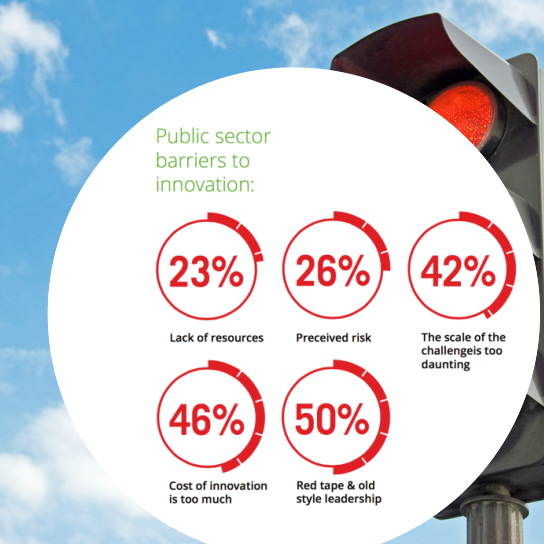Executive Summary
The government wants to go digital but, while there is a desire for transformation, change has been slow since the launch of Digital by Default during the last Parliament.
This study reflects on a survey of CIOs, CTOs and IT executives, which has revealed several barriers hindering digital innovation within the public sector. This has resulted in organisations falling behind their private sector counterparts in the race to go digital.
This need not be the case, however, as IT leaders have also outlined ten keys that can help overcome those obstacles - and see the public sector become an exemplar for businesses looking to make digital a reality.
10 Principles to Support Digital Initiatives
The study’s findings were shared with IT leaders across private and public sector organisations and feedback has been pooled into 10 principles for digital transformation. These topical themes provide a guide for organisations looking to breakdown barriers and make digital happen.
1. Allow for some risk
Digital transformation and the opening up of data is creating big challenges for both the public and private sector. Too often this change is viewed as a threat rather than an opportunity. At the same time, current ways of working provide a security blanket – as long as you follow the rules, you won’t get fire. But disruptive innovation is about saying ‘do it a different way’. This requires people who are prepared to put their head above the parapet.
2. Have a clear vision
The systems and processes currently in place to public sector organisations have been set up to support current ways of working. To break with the old, there needs to be a catalyst for change. This either requires a strong leader who can sell a story, or a common cultural aspiration within the organisation to provide a clear vision.
3. Deliver transformation in small chunks
Big IT projects are extremely time consuming and expensive to implement. They are fraught with risk, and can be out of date before they are ready. Take a look at the £6bn National Programme for IT the NHS axed in 2011, almost ten years after it was initiated. When projects are too big it’s hard to predict cost and timescales with any certainty.
When projects are managed in smaller chunks, however, it’s easier to predict outcomes and set expectations. For individuals operating within a target driven culture this piecemeal approach is much more manageable.
4. Retain the best of legacy
Rather than replace an entire system in one go, tackling transformation in smaller chunks also allows the best bits of legacy systems to be retained. This will let organisations maximize historic investments, and ensure adequate systems are not discarded at huge unnecessary expense.
5. Allow for cultural adjustment
When things change too quickly, it can be difficult for end users and staff to adapt immediately. An evolutionary approach can be less daunting and help stakeholders adjust over time.
6. Be citizen focused
Digital transactions are allowing citizens to have a much bigger say on how services are delivered. Organisations don’t need to second-guess what the end user is thinking as they can now receive real-time feedback on how services are being used. This contextualized data is providing a greater understanding of what is required from an application.
7. Prioritise productivity not vanity
When we look at Smart City projects, the focus is on achieving more or performing better with scarce resources. Digital innovation should not be seen, as vanity projects that make things look nicer and shinier – they are fundamental for the health of the economy. These projects should concentrate on improving productivity so we can free up money and resources to invest elsewhere
8. Tackle the business problem
Providing a better, more efficient public service often involves staff working with different organisations. Social workers tasked with safeguarding children may spend more time working with other agencies, addressing things such as education and health issues, than they do their own.
As organisations drive efficiency within their own function, they can inadvertently develop silos and create technical barriers between agencies. If organisations are going to allow external collaboration they need to develop applications that focus on the business problem, not the organisation.
9. Embrace commercial partnerships
Standard public sector operating models do not provide an incentive to work with the private sector. Traditionally the public sector has either handled something internally or outsourced it completely. Projects go as far as the commercial barrier and then stop. Instead, the public sector should work closer with commercial partners and bring best practice methods of operating in from the private sector.
10. Protect the public purse
There is a natural concern that private sector partners will not be working in the public interest. But this has to be balanced against a need to make every pound stretch further. If public sector organisations embrace the ‘as-a-service’ model, for instance, they can acquire the technical support needed while only ever paying for what they use. If they no longer require this support, they can then switch this off without incurring any capital costs and protect the public purse.
Conclusion
The need to go digital is an inevitability sweeping across the public sector. There are many compelling reasons to pursue digital policies – and as the benefits of Smart City projects are realised this will become imperative.
Download the full white paper here.

